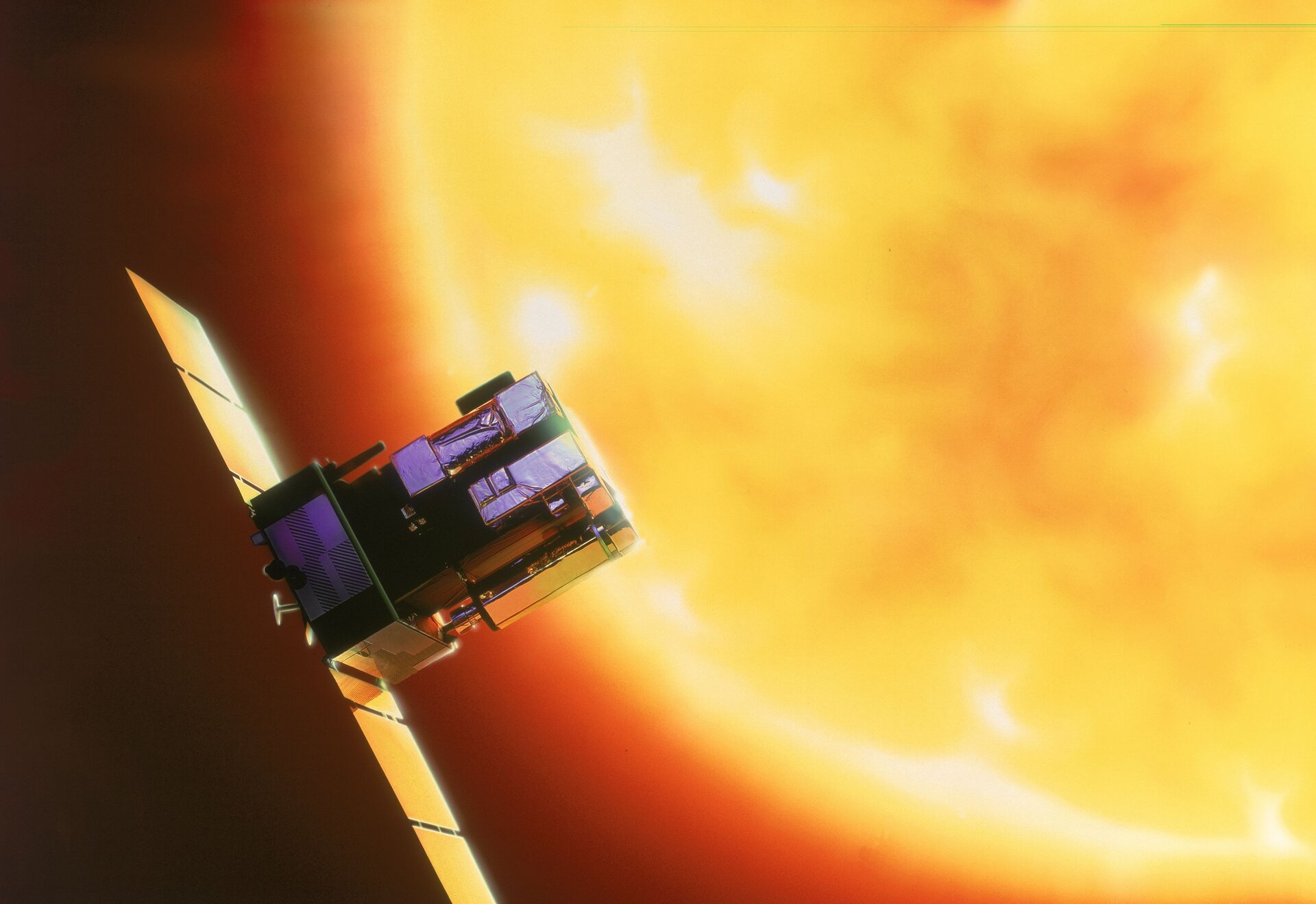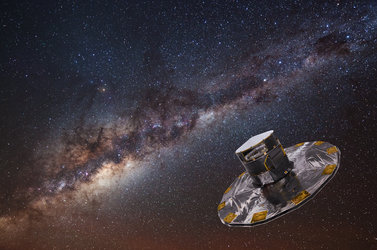19 June
2003: On 19 June 2003, the high-gain antenna (HGA) on ESA's SOHO spacecraft suffered a malfunction in its pointing mechanism - a stuck motor drive would not permit the antenna to move.
The HGA, which transmits high-speed data to Earth, became fixed in position. After this, astronomers had to rely on a slower transmission-rate signal, sent through SOHO's back-up antenna. However, this signal could not transmit all of SOHO's scientific data.
SOHO orbits a point in space, 1.5 million kilometres closer to the Sun than the Earth, once every six months. To re-position the HGA for the next half of this orbit, engineers rolled the spacecraft through a half-circle on 8 July 2003. On 10 July, the 34-metre radio dish in Madrid re-established contact with SOHO's HGA. Then on the morning of 14 July 2003, normal operations with the spacecraft resumed through its usual 26-metre ground stations, as predicted.
With the HGA now static, the blackouts from the HGA lasting between 9 and 16 days, continued to occur every three months. Engineers rotated SOHO by 180 degrees every time this occurred and this manoeuvre minimised data losses.















 Germany
Germany
 Austria
Austria
 Belgium
Belgium
 Denmark
Denmark
 Spain
Spain
 Estonia
Estonia
 Finland
Finland
 France
France
 Greece
Greece
 Hungary
Hungary
 Ireland
Ireland
 Italy
Italy
 Luxembourg
Luxembourg
 Norway
Norway
 The Netherlands
The Netherlands
 Poland
Poland
 Portugal
Portugal
 Czechia
Czechia
 Romania
Romania
 United Kingdom
United Kingdom
 Slovenia
Slovenia
 Sweden
Sweden
 Switzerland
Switzerland


































